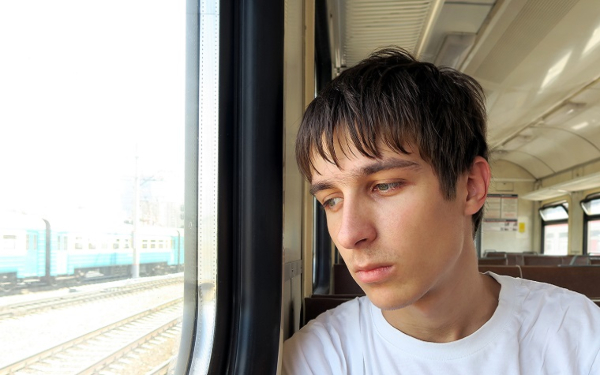
Do you think there is a disconnect between senior management and frontline practitioners?
- Yes (92%, 747 Votes)
- No (8%, 68 Votes)
Total Voters: 815
Practitioners are struggling to respond to extrafamilial harm to children, with little evidence that interventions are keeping them safe, an analysis of serious case reviews has found.
Social workers and multi-agency colleagues are failing to identify children at risk by not picking up on early indicators, such as missing episodes, said the Child Safeguarding Practice Review Panel, in its 2023-24 annual report.
They are also struggling to build the relationships with children and families necessary for effective practice and are too often focusing on young people’s behaviour, rather than their underlying needs, the report found.
Practitioners were also stymied by high thresholds for accessing provision such as child and adolescent mental health services (CAMHS), and sometimes lacked effective supervision in relation to extrafamilial harm.
Among recommendations for improvement, the panel – whose role is to draw lessons from cases of child death or serious harm – called for better analysis of missing episodes, the allocation of single lead practitioners to children experiencing extrafamilial harm and improved supervision.
What is extrafamilial harm?
The panel defines extrafamilial harm as “risks to the welfare of children that arise within the community or peer group, including sexual and criminal exploitation”, along with gang-related harm.
It says that, in general, “parents may not be aware that their child is at risk or may be struggling to protect their child and the family from harm against exploiters”.
The children at risk of extrafamilial harm
Of 330 local case reviews analysed by the panel in 2023-24, 78 featured extrafamilial harm. Of this group, 56% of children had experienced youth or gang-related violence, 55% had experienced criminal exploitation and 40% had experienced sexual abuse or exploitation.
The proportion of black children in the extrafamilial harm cases (24%) was three times higher than in a comparison sample of other cases (8%).
A quarter of children (26%) were not enrolled at school or receiving an education, 59% had poor school attendance, 67% had been or were currently a child in need, 38% had been or were currently on a child protection plan and 49% were known to a youth offending team.
These proportions were all higher than for children who had not experienced extrafamilial harm.
Failure to identify risk factors
The most common risk factor for children experiencing extrafamilial harm was repeatedly going missing (57%).
However, the panel found practitioners were not spotting early indicators, including missing episodes.
“Several reviews pointed to missing episodes not being escalated, not being considered within the context of exploitation, not being responded to with robust multiagency plans, and not being assessed as high risk,” said the panel.
“Reviews also highlighted how practitioners often had little or no information regarding where children were going when they were missing or what was happening to them.”
Reviews described some assessments as weak, with a lack of analysis and a failure to identify extrafamilial harm or consider cumulative harm, which could lead to the level of risk being underestimated.
Celebrate those who’ve inspired you
For our 50th anniversary, we’re expanding our My Brilliant Colleague series to include anyone who has inspired you in your career – whether current or former colleagues, managers, students, lecturers, mentors or prominent past or present sector figures whom you have admired from afar.
Nominate your colleague or social work inspiration by either:
- Filling in our nominations form with a letter or a few paragraphs (100-250 words) explaining how and why the person has inspired you.
- Or sending a voice note of up to 90 seconds to +447887865218, including your and the nominee’s names and roles.
If you have any questions, email our community journalist, Anastasia Koutsounia, at anastasia.koutsounia@markallengroup.com
Adultification
While children experiencing extrafamilial harm had often faced significant trauma and adversity, practitioners sometimes did not recognise how this may affect their behaviour and willingness to engage.
There was evidence in some reviews of adultification bias, where children are seen as older than their years, an issue particularly affecting black children.
This tended to occur when practitioners were working with children who were both vulnerable to risk and posed a risk to others, which was common in incidents involving youth violence, gangs and criminal exploitation.
Too often service responses focused on offending behaviour, which was seen as a ‘choice’, so indicators of exploitation were not recognised or acted on as their involvement in criminal activity.
Struggle to build relationships
Practitioners struggled to build relationships with children and families – including because of high levels of staff turnover – preventing them from gathering information on the risks they faced.
Interventions tended to involve direct work with children aimed at changing their behaviour. However, the panel found that “there was unfortunately little evidence that interventions intended to keep children safe from harm were working”.
There were mixed results from moving children out of area. While this sometimes reduced risks for children being criminally exploited, in other cases it was disruptive, including to the child’s education, with some absconding from their placements.
For those experiencing child sexual abuse or exploitation, out-of-area placements could leave them feeling isolated and, in some cases, were not safe.
High thresholds for support
Practitioners sometimes missed opportunities to refer children to support services, including youth offending teams, and, in other cases, faced high thresholds to source support, such as in relation to CAMHS.
One review reported that CAMHS would not work with children with mental health needs if there were associated risks with gangs and criminal exploitation, leaving vulnerable children without support.
Practitioners reported that this was a challenging area of work and that they sometimes lacked sufficient support or supervision.
Key learning from panel
The panel’s learning from cases involving extrafamilial harm included that:
- Missing episodes should be carefully analysed to understand patterns and inform risk management and potential disruption work.
- As far as possible, children experiencing extrafamilial harm should have contact with a single lead practitioner who has oversight of their lived experience and support needs.
- Staff need robust support, supervision and training – including on a multi-agency basis – to optimise outcomes for children and support practitioner wellbeing.
- Interventions to reduce the risk of extrafamilial harm should be evaluated so that practice is based on evidence of what works.
Spot the signs of child sexual exploitation
 Community Care Inform Children’s child sexual exploitation knowledge and practice hub includes guidance on identifying, understanding and responding to CSE.
Community Care Inform Children’s child sexual exploitation knowledge and practice hub includes guidance on identifying, understanding and responding to CSE.
It has been produced by independent safeguarding trainer Kelechi Ukandu, who is a former NHS safeguarding lead and regularly carries out reviews of child deaths and serious incidents for local safeguarding partnerships.
The hub is available to anyone with a licence for Community Care Inform Children.
Fall in number of serious cases
Under section 16C(1) of the Children Act 2004, councils must notify the panel if a child it knows or suspects has been abused or neglected dies in its area, or where such a child who is normally resident in its area dies outside England. Councils and their safeguarding partners must then undertake a rapid review into the serious incident and submit it to the panel.
Overall, the panel received 330 rapid reviews from local authorities, concerning the deaths of, or serious harm to, 485 children in 2023-24. This was a fall from the previous year, when it received 402 reviews concerning 538 children. The fall was driven by a year-on-year drop in the number of serious harm cases.
The panel said it was not possible to determine whether this reflects a decrease in the number of serious incidents or whether fewer notifications were made compared with previous years. It said it was doing further work with the DfE to investigate the issue.
Key findings from reviews
The panel’s analyses of rapid reviews in 2023-24 found that:
- 87% of families involved in the incidents were known to children’s social care either as an open (49%) or previous
(38%) case. - 49% of children had experienced neglect, 48% physical abuse, 20% emotional abuse or 18% sexual abuse or exploitation.
- 22% of children had one or more mental health conditions, whether diagnosed or undiagnosed.
- In 53% of incidents, at least one of the parents or relevant adults were reported to have a mental health condition, while in 43% of cases at least one parent or relevant adult were recorded as having an addiction or as misusing drugs or alcohol.
- Domestic abuse was recorded in 47% of incidents.
- Lack of co-ordination between services featured in 81% of incidents. This often included failures in information sharing, inconsistent record keeping, role confusion, delayed responses and fragmented services.
- 66% of reviews recorded a lack of professional curiosity, for example, practitioners accepting surface-level explanations, failing to see when parents were seemingly co-operating but were not keeping to agreed plans, and not investigating inconsistent stories or red flags.
- Weak risk assessment and decision-making was evident in 62% of incidents. This included overlooking the role of extended family members or other adults being present in the home, and failing to consider comprehensive information from all agencies.






 Bournemouth, Christchurch and Poole
Bournemouth, Christchurch and Poole  Hampshire County Council
Hampshire County Council  Oxfordshire County Council
Oxfordshire County Council  South Gloucestershire Council
South Gloucestershire Council  Wokingham Borough Council
Wokingham Borough Council 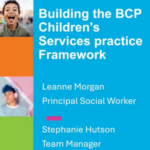 Webinar: building a practice framework with the influence of practitioner voice
Webinar: building a practice framework with the influence of practitioner voice  ‘They don’t have to retell their story’: building long-lasting relationships with children and young people
‘They don’t have to retell their story’: building long-lasting relationships with children and young people 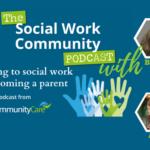 Podcast: returning to social work after becoming a first-time parent
Podcast: returning to social work after becoming a first-time parent  How managers are inspiring social workers to progress in their careers
How managers are inspiring social workers to progress in their careers  Workforce Insights – showcasing a selection of the sector’s top recruiters
Workforce Insights – showcasing a selection of the sector’s top recruiters 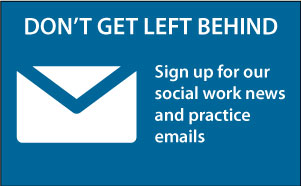
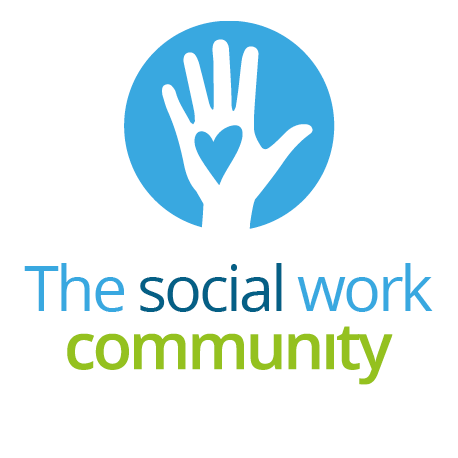
 Facebook
Facebook X
X LinkedIn
LinkedIn Instagram
Instagram
Given high caseloads Social Workers do not have the time to do everything
Having high caseloads do social workers have time to do anything?
Anon. What a lovely response and so true. Hopefully authors of the above report will take note and will not look to “blame” practioners.
Social Workers should not be afraid to address why they are overloaded with cases. Social Worker need to stop complaining about being overloaded with cases and doing nothing about it. On the other hand I recognise that social workers are fearful of losing their jobs or being perceived as being unable to cope or prioritise their caselad. There is only so much you can prioritise until you are faced with managing competing priorities and unless you are prepared to go over and above your contracted hours you are not going to meet all your duties and responsibilities. Where are the trade unions, professional social work bodies and legislation to protect front line staff from harassment and bullying, as when social workers do raise concerns about practices or gaps in services and resources and their impact on vulnerable adults and children, and more often than not they are left isolated and hung out to dry. If you cannot tell managers you do not have capacity and they do not listen as their main prioritiy is reducing the waiting list at any cost, there is something very wrong with the work environment. An essential part of safeguarding adult and children under social services is ensuring the welfare of front line staff and that they have access to the tools, resources and training that incorportates critical perspectives to carryout their responisiblities effectively and in the best interests they are employed to safeguard and protect.